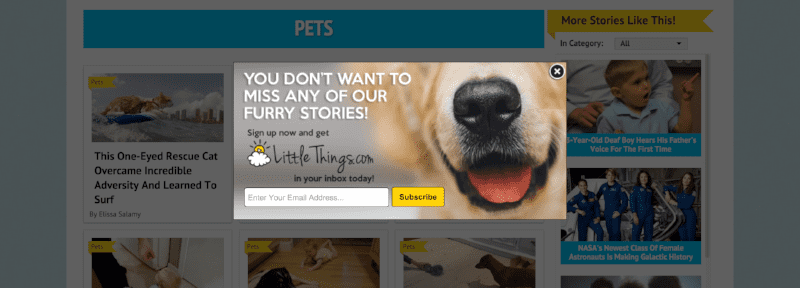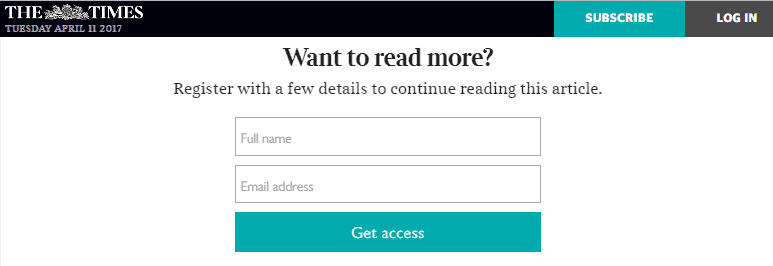Surely you’ve seen all the wildly differing statistics about email’s returns. “Email has a 3800% ROI!” “Actually, email’s ROI is 4300%!” “No, email is a perpetual motion ROI device that generates infinite revenue from thin air!”
People have different ideas about just how big the returns are from email, but everyone who’s delved into email marketing agrees: it works, and it works well.
No doubt email’s revenue potential outpaces any other digital marketing means, but it doesn’t happen by magic. It takes informed strategy and measured effort on behalf of you, the email marketer. In this three-part blog series, we’ll explore how to maximize your email ROI at each step of the email process: the email list, the email itself, and the email send. By the end of this riveting email marketing trilogy, we’ll have a solid program foundation, a path to profitability, and maybe even a deal with the studio to make three more.
The Email List: A Primer
Your email list is arguably the most important part of your email program. The bigger and better your list, the bigger and better your ROI, so the first part of this series will focus on growing your email list and keeping it healthy. What does a healthy email list look like?
Just like with anything you might grow in real life, a healthy list is organic and GMO-free: a naturally-grown list of nothing but users who have personally opted into your communication, free of Genetically Modified Opt-ins. Everyone on your list should have naturally, personally opted into receiving your communication, which means that buying lists is out of the question. Why is that?
We could spend an entire paragraph talking about why you shouldn’t buy email lists, but we won’t do that because you definitely know better than that. You know that bought lists do more harm to your ROI than good because of the inherently poor quality of sold email addresses. You know that sending to bought lists can irreparably harm your deliverability and prevent you from reaching your organic list. You know the legal consequences for emailing people who have opted out of your communications. So we won’t waste your time.
Phew! That was easy. Let’s talk about a few ways to grow your list naturally.
Collecting Emails with On-Site Email Capture

Because users must voluntarily hand over their email address, it only makes sense that your email capture processes are as user-friendly as possible. First, make sure your email sign-up is easy to find. Burying the form in your footer can deter users who would have otherwise been loyal newsletter readers. Place capture forms at the top of the page, as close to the top as possible, or inline them in articles to pull in readers who are deeply engaged in your content.
While some people debate the efficacy of lightboxes, they’re an extremely effective way to encourage email signups when you take the steps to properly implement them. The news site Rare.us increased their newsletter signup rate 5x, partially through email capture widgets that were tested and optimized with the user in mind. You can configure lightboxes to display after a certain amount of time or after a reader has read a certain amount of articles, which ensures that you’re meeting your readers at the time when they’re most open to signing up.
The initial capture form should also be optimized for quick completion. You’ve got a limited window to grab your reader’s attention, so you don’t want to deter them by placing a complex, multi-step process in between them and joining your email list. The less effort you require from the audience, the more likely they are to complete the signup process, so consider limiting this first form to only the data that’s absolutely necessary.
Still, having more customer data allows for more targeted outreach in the future, so how do you balance user experience with user data? Consider implementing a progressive capture form with optional fields that can be completed once the email address is obtained. Preference centers also allow subscribers to provide data at the user’s convenience.
Providing Value in Exchange for Email Addresses

It’s not enough to simply tell your audience to hand over their email address; show them the value of doing so! Before you can even start thinking about the calls-to-action in your emails, you need to make sure your capture forms are paired up with an inviting CTA. Give them a quick look into what they can expect from your emails, whether it’s a daily recipe or a weekly digest of top tennis articles. This ensures that your list will be filled with people who want your content, which will maximize engagement and, of course, ROI.
The practice of collecting email addresses in return for gated eBooks and whitepapers is nothing new, but many publishers now place their articles behind an “email paywall.” Digital publishing companies provide value in the form of access to additional articles per month, hoping to nurture these engaged readers into future paid subscribers. If your business model hinges on paid subscriptions (or even if you just use the email wall to recoup revenue lost to ad blockers), having that direct connection to readers will prove especially invaluable.
Using the Power of Social Media to Grow Your List

By nature, social media is great for building brand awareness and getting people’s attention, but it’s not so great for holding onto that attention. That’s why your social media approach should focus on bringing followers over to your email list, where the real relationships can be made and readers can be nurtured into providing concrete returns.
You can take advantage of social media’s acquisition potential by posting links to your email signup landing pages, or by using their built-in email capture forms, where available. Facebook’s newest Instant Articles update allows publishers to place email capture forms inside Instant content. Publishers haven’t exactly been happy with Instant Articles, so the fact that email is Facebook’s gesture of goodwill shows that Facebook understands just how valuable the email address is.
When social media algorithms are constantly changing and monetization opportunities are scarce, it’s important for companies to work towards building their owned audience. Taking back your audience from social media ownership puts you on the fast-track to a higher digital marketing ROI.
Maintaining Proper Email List Hygiene
Now that you’re taking the steps to grow your email list organically, you’re starting to grow a healthy little list. Unfortunately, as with your own personal health, you can’t just get healthy and rest on your laurels; you have to take steps to keep it that way. When it comes to list hygiene, starting out clean is the most important thing you can do, but obtaining emails organically doesn’t mean you won’t end up with a bad address sometimes, nor does it prevent the list from declining in quality over time.
Scrubbing bad addresses is a good first step to improving list health. Where did these addresses come from in the first place? Maybe someone was so excited to subscribe to your email newsletter that they hit a wrong key or two. It’s also possible that one of your less engaged users gave you a fake address on purpose. It happens, especially when you’re offering gated content or other offers in exchange for an email address. If that’s the case, make sure these get cleared from your list routinely.
Somes sites use a double opt-in signup to make sure the email addresses they collect are correct. While this can be an additional hurdle that new subscribers aren’t willing to clear, it all but guarantees that the addresses on your list are correct. Still, marketers who use single opt-in signup process must be vigilant about removing subscribers who fail to engage. This ensures that you’re sending email only to the people who want to hear from you.
Why does list hygiene matter so much? You can’t reach your full email revenue potential if your email list isn’t actually seeing your messages. When your engagement rates are consistently high, your inbox placement rate is more likely to be as well. This is an important component of email deliverability, which we’ll discuss further in a subsequent post.
Keeping Your Email List Engaged
Finally, even the readers who once actively engaged with your emails might eventually go dormant. If subscribers start to feel that your emails are no longer relevant to them, it’s possible they’ll stop clicking on them, dragging the quality of your list down. To minimize the chances of this happening, you have to make sure that you keep coming through with your email content.
But how do you build your emails in a way that keeps audiences engaged and reaches its full ROI potential? We’ll talk about that a little bit more in Part II: Crafting the Email.
